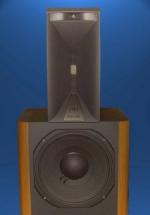I read the portion addressed to me, but must admit I didn't read the bit to Zilch.
The detail and resolution don't get lost... the "detail" you are seeing is the noise caused by reflections in the room. Unfortunately looking at your impulse plot, there seems to be a heck of a lot of reflective information in your measurement.
In my much larger room I can usually see a distinct first reflection. In this measurement taken some time ago of one of the Project May tests, you can see that I was close to the floor and could only get about 3ms of clean measurement before my first reflection at ~6.5ms... the initial delay of ~3.5ms is due to the digital latency of running the signal through my DEQX unit... in a typical measurement the impulse would start much closer to time zero. The only usable windowing for this measurement would be to place the initial cursor at the beginning of my pulse (inverted polarity in this case) and the beginning of the first reflection. With a window of only 3ms, the curve will not be terribly useful below maybe 2KHz.
I have learned quite a bit about taking these measurements since this was taken... today I would set up the speaker system differently to get a much longer clean window.
Widget






 Reply With Quote
Reply With Quote
 When DEQX is in the circuit the delay is even longer... and obviously so is the time of flight when a 2m measurement is made.
When DEQX is in the circuit the delay is even longer... and obviously so is the time of flight when a 2m measurement is made.



